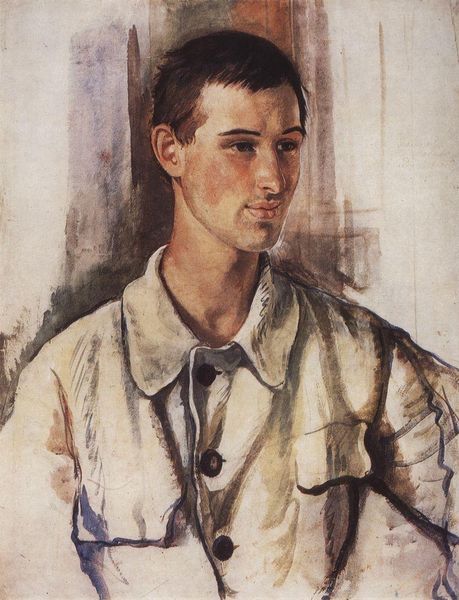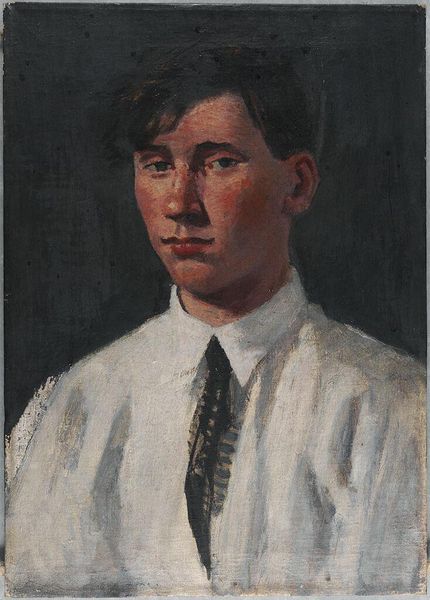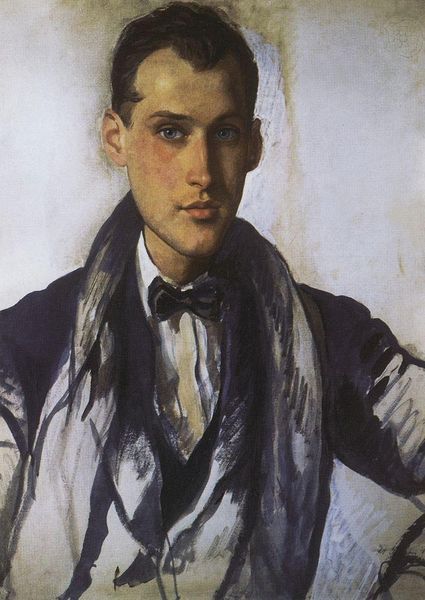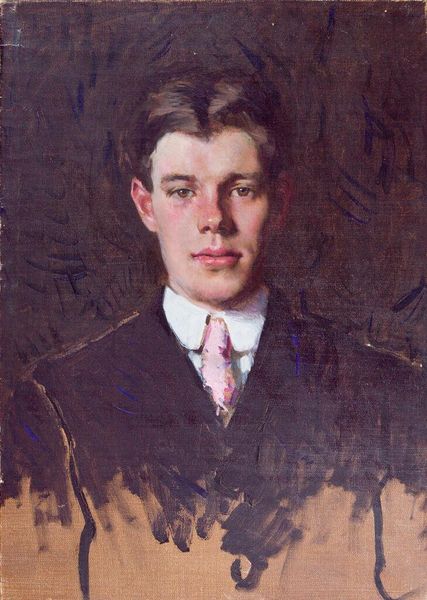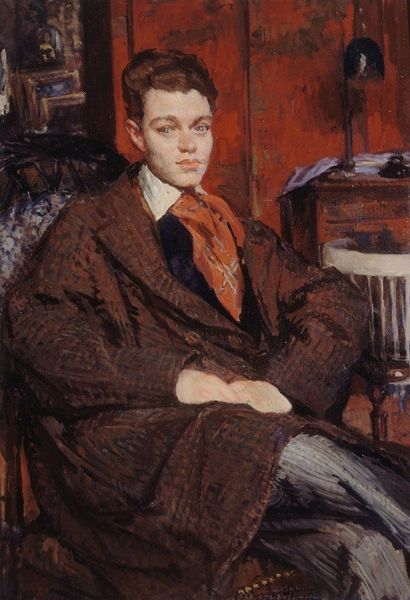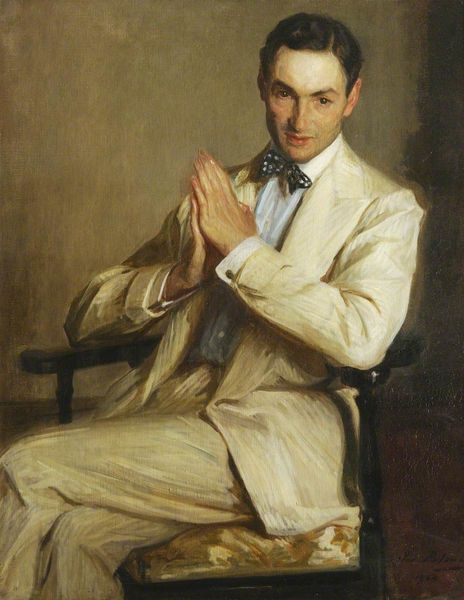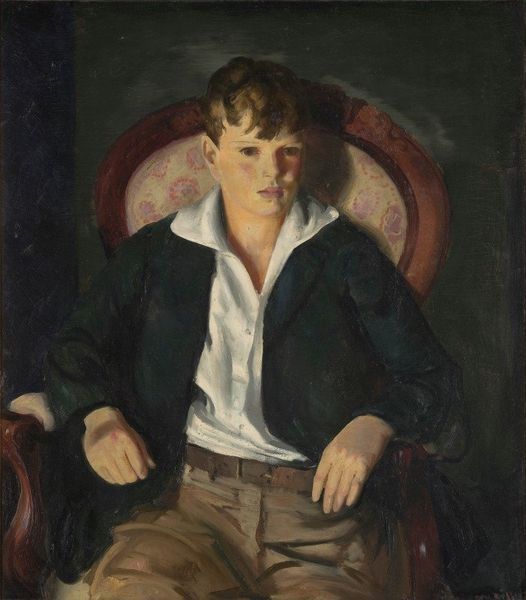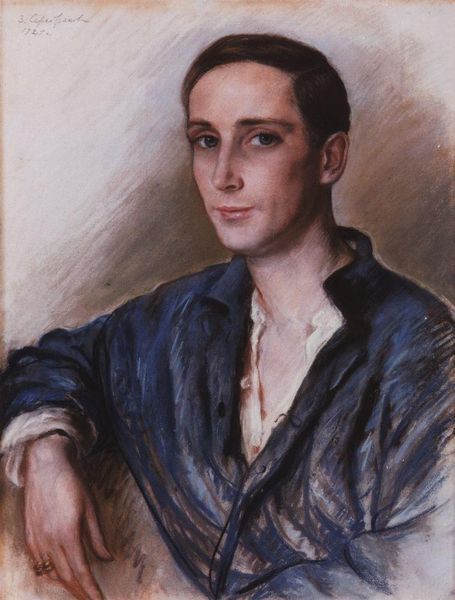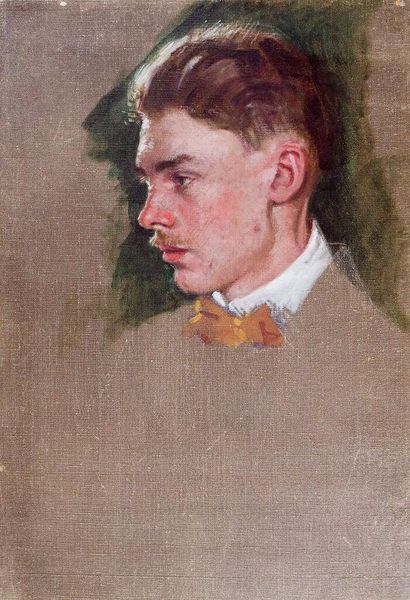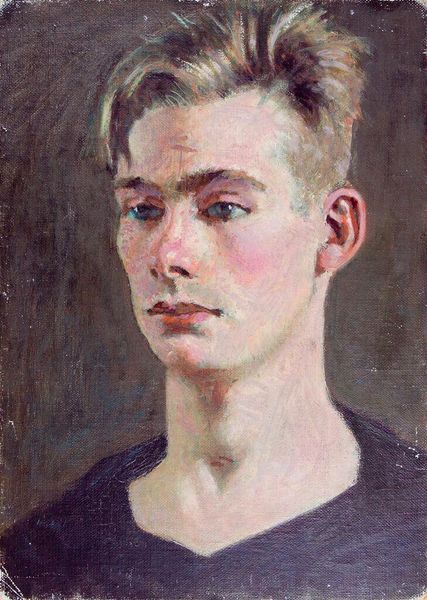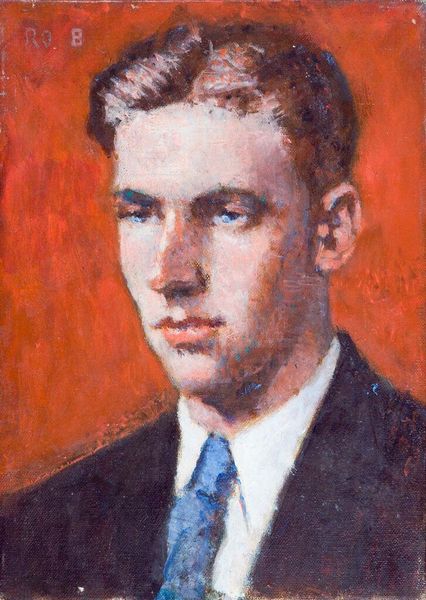
painting, oil-paint
#
portrait
#
painting
#
oil-paint
#
modernism
#
realism
Copyright: Public domain US
Curator: Before us hangs Zinaida Serebriakova’s oil on canvas, "Portrait of R. Ernst," painted in 1921. The subject has an intriguing presence. What are your initial thoughts? Editor: There’s a coolness to it, almost aloofness. The composition is carefully constructed, leading the eye straight to the subject's face with its somewhat piercing gaze, framed by subtle brushstrokes. There is a strong tonal contrast in play here. Curator: Indeed. Serebriakova, painting in a turbulent period of Russian history, presents us with Ernst, situated perhaps in a space indicative of intellectual life. The seemingly casual pose, almost reclining, suggests a defiance of formal conventions while still engaging with a visual language familiar to portraiture. The year it was painted, 1921, was during a time of famine in Russia and also the height of Serebriakova's artistic career prior to her eventual exile. Editor: That’s an interesting tension—the turbulent external context juxtaposed with the carefully balanced, serene composition and the very static representation of a single individual. It seems the color palette of cool reds and blues and greens creates an atmosphere of reflection. Notice the placement of his hand—it invites the viewer to contemplate this image as something of significant intellectual weight. Curator: Certainly. Consider also how his dress and accoutrements—the bow tie and what appear to be piles of papers next to him—speak to the intersection of intellect and status. His somewhat androgynous presentation challenges traditional notions of gender. And given that portraiture often functioned as a mode of social capital, we can explore questions surrounding who gets immortalized in art and the historical forces that contribute to the process. Editor: Absolutely. The artist's technique is masterful. It really holds your eye and engages the gaze despite, or maybe because of, the muted palette, creating a space for quiet observation. This encourages viewers to question the narrative of self in representation, too. Curator: A lot of factors to think about in approaching this artwork. It provides us with an access point for delving into early twentieth century understandings of gender, class, and national identity during this unique cultural period. Editor: I leave feeling aware of the image’s unique qualities and also the broader theoretical considerations, and this is the true value of art as a space to both appreciate and interpret from a wide range of personal perspectives.
Comments
No comments
Be the first to comment and join the conversation on the ultimate creative platform.
